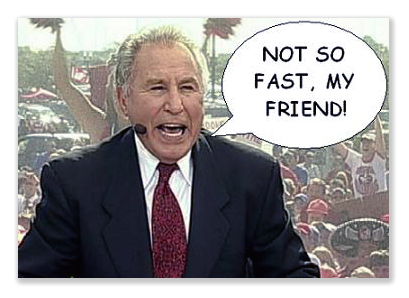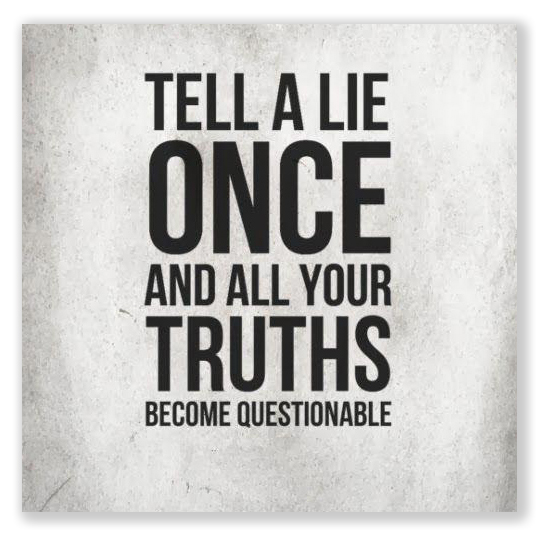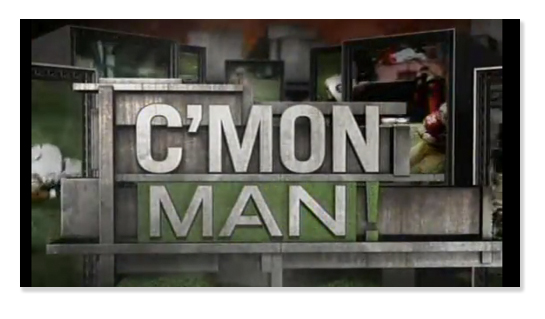We post news and comment on federal criminal justice issues, focused primarily on trial and post-conviction matters, legislative initiatives, and sentencing issues.
WHOSE PANTS ARE ON FIRE?
 You’d think that when a key prosecution witness lies on the stand during a murder trial, and the prosecutor knows it and the judge knows it and everyone except the jury knows it, the judge or the prosecutor would jump up and say, “Not so fast!”
You’d think that when a key prosecution witness lies on the stand during a murder trial, and the prosecutor knows it and the judge knows it and everyone except the jury knows it, the judge or the prosecutor would jump up and say, “Not so fast!”
After all, the obligation of someone – and that someone is supposed to be the prosecutor – to tell the jury the witness is lying is pretty well established after Napue v. Illinois and Giglio v. United States.
 It’s pretty important that the prosecutor tell the jury his or her witness is lying. The defense attorney can do that, and often does, but somehow the punch of branding the other side’s witness a liar is not quite as effective as telling the jury your own witness is a liar. And even if the lie is about something tangential to the meat of the testimony, it’s important that the jury know about it. You lie about a little thing, you may lie about big things, too.
It’s pretty important that the prosecutor tell the jury his or her witness is lying. The defense attorney can do that, and often does, but somehow the punch of branding the other side’s witness a liar is not quite as effective as telling the jury your own witness is a liar. And even if the lie is about something tangential to the meat of the testimony, it’s important that the jury know about it. You lie about a little thing, you may lie about big things, too.
Consider the fate of poor Lariec Sherman, shot to death 18 years ago in a Peoria, Illinois, housing project. Although there was no physical evidence, the State of Illinois quickly rustled up four people who said Paysun Long was the shooter.
At Paysun’s first trial, two witnesses changed their stories, but the prosecutors playing the recordings of their statements made before they had recanted. One of the remaining two witnesses, Brooklyn Irby, first fingered Paysun but then then changed her story. She ultimately testified that before the trial, she told prosecutors her story about Paysun being the shooter was a lie.
Paysun was convicted, but it was overturned on appeal.
When Paysun was retried, prosecutors used the recorded testimony of two witnesses and live testimony from the other two. The defense again told jurors about how two witnesses had recanted. When Irby testified, she told the jury that Paysun was the shooter, but her account of the crime differed from what the other eyewitness said. The most damaging witness said Paysun shot the victim from behind.
 It was Irby’s cross-examination that was interesting. She denied she had ever told the police and prosecutors that her initial identification was a lie. Although the prosecutor did nothing to correct her testimony, Paysun’s attorney didn’t sit on his hands. He called the prosecution’s own investigator as a witness, who admitted to jurors that Irby had indeed recanted her incriminating testimony during the first trial.
It was Irby’s cross-examination that was interesting. She denied she had ever told the police and prosecutors that her initial identification was a lie. Although the prosecutor did nothing to correct her testimony, Paysun’s attorney didn’t sit on his hands. He called the prosecution’s own investigator as a witness, who admitted to jurors that Irby had indeed recanted her incriminating testimony during the first trial.
Even during closing arguments, the prosecutor never acknowledged that Irby had lied. Instead, he told the jury about a letter Irby had written that was even not in evidence. The judge interrupted, telling the jury to disregard the State’s attempt to put unadmitted hearsay in front of the jury, but all the instruction did was to get the jury’s attention. So much so, in fact, that during deliberations, the jury asked to see the letter that was not part of the record.
Unsurprisingly, Paysun lost the second trial, too.
Paysun filed a post-conviction motion in state court, arguing the prosecutor violated Napue v. Illinois, which holds that the a prosecutor’s failure to correct a government witness’s false testimony is a due process violation. For good measure, Paysun complained that the State violated Giglio v. United States as well, which held that prosecutors have a duty to disclose to deals they make to get witnesses to testify.
Illinois courts ruled Paysun’s prosecutor had violated Napue and Giglio, but that it was “harmless error” because of other evidence in the case (that being the shaky testimony of the only eyewitness who had not recanted) that proved Paysun’s guilt. After appeal failed, Paysun filed a 28 USC 2254 motion in federal court, seeking review of the Illinois courts’ denial of habeas.
The district court agreed that the Napue and Giglio violations were presumed to prejudice Paysun, without any harmless error analysis allowed. Last year, the 7th Circuit agreed, but then the State won the right to an en banc rehearing.
Late last month, an en banc panel of the Circuit decided 5-3 that Napue and Giglio did not necessarily mean a defendant had a due process claim if the false testimony wasn’t elicited by prosecutors, if the truth was already known to the defense during trial, if the prosecutor did not ask jurors to rely on the false testimony, or if the jury learned the truth anyway.
 Here, the panel said, although the prosecutor remained silent about Irby’s perjury, Paysun’s lawyers exposed it. Plus, the prosecutor didn’t specifically rely on Irby’s false testimony, but instead just talked around it, arguing that her identification of Paysun as the gunman was true regardless of whatever the jury might think about the rest of what she said. In fact, the majority hypothesized, maybe the prosecutor’s refusal to correct Irby’s testimony actually helped Paysun because it allowed his attorneys to be the ones to portray Irby as a perjurer.
Here, the panel said, although the prosecutor remained silent about Irby’s perjury, Paysun’s lawyers exposed it. Plus, the prosecutor didn’t specifically rely on Irby’s false testimony, but instead just talked around it, arguing that her identification of Paysun as the gunman was true regardless of whatever the jury might think about the rest of what she said. In fact, the majority hypothesized, maybe the prosecutor’s refusal to correct Irby’s testimony actually helped Paysun because it allowed his attorneys to be the ones to portray Irby as a perjurer.
“C’mon, man,” the three dissenting judges seemed to say. The dissent was puzzled, dismayed maybe, that the majority would let a prosecutor get away with a lie. They said, “the majority’s suggestions that Napue leaves the state courts room to avoid following it on the facts of this case are without support. Napue expressly rejected several of the suggestions, and its logic clearly rejects the last.”
Paysun’s attorneys have not revealed whether they plan to seek Supreme Court review. However, one commentator said, “it seems an obvious avenue of appeal, giving the justices an opportunity to reaffirm the principle they announced in 1959 and in 1972, that the government has a constitutional and ethical obligation to ensure that it speaks out against perjury when it unfolds in the middle of a trial in front of the jury.”
Long v. Pfister, Case No. 13-3327 (7th Cir., Oct. 20, 2017) (en banc)
The Marshall Project, Getting Away with Perjury (Oct. 30, 2017)
– Thomas L. Root

